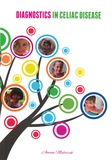Diagnostics in celiac disease

Mubarak, Amani
- Promoter:
- Prof.dr. E.E.S. (Edward) Nieuwenhuis & Prof.dr. F.J.W. (Fiebo) ten Kate
- Co-promoter:
- dr. R.H.J. (Roderick) Houwen
- Date:
- March 11, 2014
- Time:
- 16:15 h
Summary
The prevalence of celiac disease (CD) is approximately 1% worldwide. The disease is characterized by an immunological response to gluten, the storage protein in wheat, barley and rye. This response causes intestinal inflammation but can also be detected serologically by measuring disease specific (auto-)antibodies. Detecting this immunological response against gluten through histological and/or serological methods is used in the diagnosis of CD. However, none of these methods is perfect yet, so in this thesis we aimed at improving diagnostic strategies in CD. Small intestinal histology was considered to be the gold standard for the diagnosis of CD. However, in this thesis we showed that the agreement between 2 pathologists was only moderate, and that disagreement on the final diagnosis is found in almost 10% of the patients who are suspected to have CD. So, we cannot totally rely only on histology when diagnosing CD. Therefore, when a discrepancy between serology and histology is found, the first step should be to revise the biopsies. Moreover, we also showed that performing CD3 staining in order to detect intra-epithelial lymphocytes aids in making the correct histological diagnosis. Secondly, we studied methods to improve non-invasive tests in the diagnosis of CD. HLA typing is the best available test to exclude CD, because virtually all patients with CD are either HLA-DQ2.5 or HLA-DQ8 positive. However, in our studies we found that almost 6% of CD patients lack both HLA-DQ2.5 and HLA-DQ8, but all are HLA-DQ2.2 positive. This heterodimer should therefore also be considered as positive when screening for CD. Subsequently, we focused on serological tests as markers for CD. Immunoglobulin A (IgA) antibodies against tissue-transglutaminase (tTGA) or endomysium (EMA) are considered to be specific and sensitive screening tools for the disease, although they do not reach 100% accuracy. Because both EMA and tTGA have been reported to be less sensitive in children.